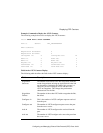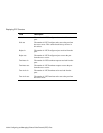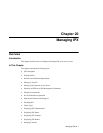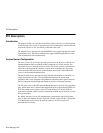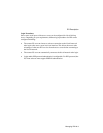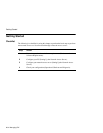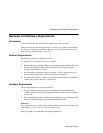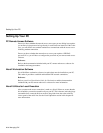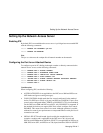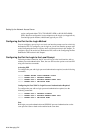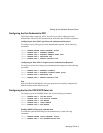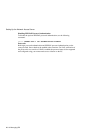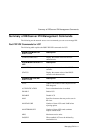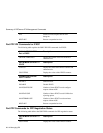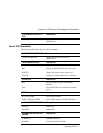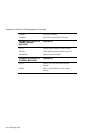
Managing IPX 20-7
Setting Up the Network Access Server
Setting Up the Network Access Server
Enabling IPX
By default, IPX is not enabled on the access server. A privileged user must enable IPX
with the following commands:
Local> CHANGE IPX INTERNAL
ipx-net
Local> CHANGE IPX ENABLED
Note
The
ipx-net
value must be a unique Novell network number on the network.
Configuring the Port for an Attached Device
To configure a port for PCs dialing in through a modem or directly connected to the
network access server, use the following commands:
Local> CHANGE PORT
n
ACCESS DYNAMIC
Local> CHANGE PORT
n
ALTERNATE SPEED NONE
Local> CHANGE PORT
n
INACTIVITY LOGOUT ENABLED
Local> CHANGE PORT
n
FLOW CONTROL CTS
Local> DEFINE PORT
n
SIGNAL CONTROL ENABLED DSRLOGOUT ENABLED
Local> DEFINE PORT
n
SIGNAL SELECT CTS
Local> LOGOUT PORT
n
Considerations
When configuring IPX, consider the following:
• ALTERNATE SPEED is not applicable to the DECserver 90M and DECserver
90TL hardware (Ignore warning messages).
• FLOW CONTROL should match the flow control configured for the attached
device. For DECserver 700 (8 or 16 port) and DECserver 900TM (32 port), flow
control can be configured either CTS/RTS or XON/XOFF. CTS is recommended.
For the DECserver 90M and DECserver 90TL, only XON/XOFF is supported. If
the attached device does not support XON flow control, configure flow control
DISABLE. This means flow control is not used. Although operation is possible
without flow control, poor performance or unexpected behavior with your Novell
connection can result.
• SIGNAL SELECT should match signals used by the attached device (for
example, a modem) and is applicable for the DECserver 700 (16 port) and
DECserver 900TM hardware. SIGNAL SELECT is not applicable for DECserver
90M, DECserver 90TL, and DECserver 700 (8 port) hardware. SIGNAL SELECT



